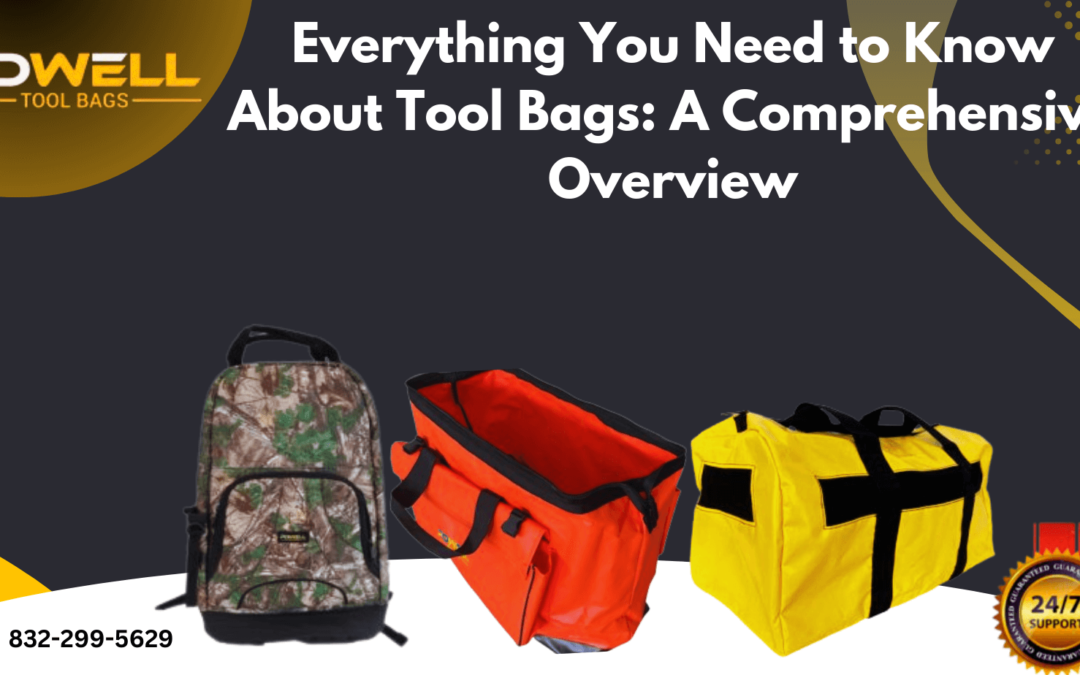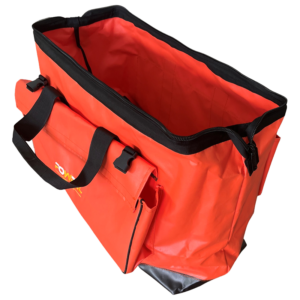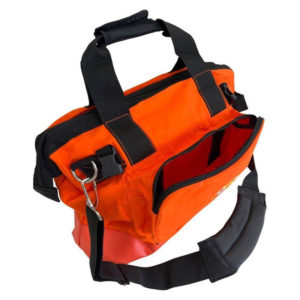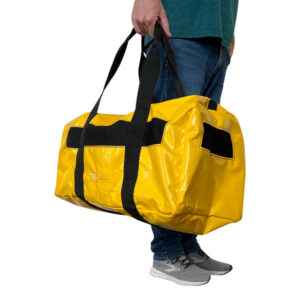Key takeaway:
Understanding the versatility and importance of tool bags is essential for professionals and DIY enthusiasts alike. From promoting organization and efficiency to enhancing portability and protecting valuable tools, tool bags play a crucial role in optimizing workflow and ensuring project success across various industries and applications. By investing in a quality tool bag that meets your specific needs and preferences, you can streamline your work processes, maximize productivity, and enjoy greater convenience and peace of mind in your day-to-day tasks and projects.
Introduction
Materials and Construction
Common Materials Used in Tool Bag Construction
- Canvas: Canvas tool bags are popular for their durability and affordability. They are made from woven cotton fabric, which is sturdy and resistant to tears. Canvas tool bags often feature reinforced stitching for added strength.
- Nylon: Nylon tool bags are lightweight and water-resistant, making them ideal for outdoor use and harsh environments. They are highly durable and resistant to abrasions, but may not offer as much protection against sharp objects as other materials.
- Cordura: Cordura is a type of nylon fabric known for its exceptional durability and resistance to tears and abrasions. Cordura tool bags are rugged and long-lasting, making them suitable for heavy-duty use in industrial settings.
- Leather: Leather tool bags are known for their classic appearance and durability. They offer excellent protection against moisture and abrasions and develop a unique patina over time. However, leather tool bags tend to be heavier and more expensive than other materials.
C. Construction Features to Look For
- Reinforced Stitching: Look for tool bags with reinforced stitching along seams and stress points to prevent tearing and ensure long-lasting durability.
- Padded Handles: Padded handles provide comfort during transportation and reduce strain on the hands, especially when carrying heavy loads.
- Waterproofing: Waterproof tool bags protect tools and equipment from moisture damage, ensuring they remain in optimal condition even in wet or humid conditions.
- Adjustable Straps: Adjustable straps allow users to customize the fit and carry the tool bag comfortably, whether worn over the shoulder or across the body.
- Multiple Compartments: Tool bags with multiple compartments and pockets help keep tools organized and easily accessible, minimizing the time spent searching for specific items.
Tool Bag Organization
Importance of Organization in Tool Bags
Organizing tools within a tool bag is not merely a matter of tidiness; it’s a fundamental aspect that directly impacts efficiency, productivity, and safety. Here’s why organization in tool bags is paramount:
- Accessibility: Well-organized tool bags allow users to quickly locate and retrieve the required tools without wasting time searching through clutter. This enhances workflow and reduces downtime during tasks.
- Efficiency: Organized tool bags promote a systematic approach to work, enabling users to complete tasks more efficiently. With tools arranged in logical order, repetitive actions become smoother and less prone to errors.
- Safety: Proper organization minimizes the risk of accidents caused by mishandling tools or inadvertently accessing the wrong ones. It also ensures that sharp or hazardous tools are securely stored to prevent injuries.
- Tool Protection: By providing designated storage spaces for each tool, organization helps prevent tools from banging against each other during transportation, reducing the likelihood of damage or premature wear.
Internal Compartments, Pockets, and Dividers for Efficient Storage
- Compartments: Tool bags often feature internal compartments that are specifically designed to accommodate different types and sizes of tools. These compartments help prevent tools from shifting around during transportation and enable users to keep similar tools grouped together for easy access.
- Pockets: Pockets are useful for storing smaller tools, fasteners, and accessories that may otherwise get lost in larger compartments. Tool bags may have various-sized pockets, some of which may be zippered or Velcro-closed for added security.
- Dividers: Dividers are essential for creating separate sections within a tool bag to organize tools more effectively. They can be adjustable or removable to accommodate tools of different shapes and sizes, allowing users to customize the layout based on their specific needs.
Tips for Organizing Tools Effectively to Optimize Accessibility and Workflow
- Prioritize Frequently Used Tools: Arrange commonly used tools in easily accessible compartments or pockets near the top of the tool bag to minimize the time spent searching for them.
- Group Similar Tools Together: Keep related tools grouped together, such as wrenches with wrenches and screwdrivers with screwdrivers, to streamline workflow and prevent unnecessary searching.
- Utilize Dividers and Pouches: Use dividers and pouches to create separate sections for different tool categories, such as hand tools, power tools, and accessories, to maintain organization and prevent items from shifting during transit.
- Label Compartment: Consider labeling compartments or using color-coding systems to quickly identify the contents of each section, further enhancing accessibility and efficiency.
- Keep Safety in Mind: Store sharp or hazardous tools in designated compartments with added protection, such as padded sleeves or reinforced pockets, to minimize the risk of injuries.
- Regular Maintenance: Periodically review and reorganize the contents of your tool bag to ensure that it remains optimized for your current needs and preferences. Remove any unnecessary items and replace worn-out or damaged tools as needed.
Considerations for Choosing a Tool Bag
Size and Capacity Based on Tool Collection and Project Requirements
- Assess Tool Collection: Evaluate the size and types of tools you typically use for your projects. Choose a tool bag with sufficient capacity to accommodate your entire tool collection comfortably, including any additional accessories or equipment.
- Consider Project Requirements: Take into account the nature and scope of your projects. If you often work on larger projects that require a wide range of tools, opt for a larger tool bag with ample storage space. For smaller, more specialized tasks, a compact tool bag may suffice.
Portability and Transportation Features
- Handles and Straps: Look for tool bags with sturdy handles and comfortable straps that distribute weight evenly across the body. Adjustable and padded straps are particularly beneficial for long-distance transportation, while reinforced handles ensure durability and ease of carrying.
- Compact Design: Choose a tool bag that strikes a balance between capacity and portability. A compact design allows for easy maneuverability in tight spaces and facilitates transportation to and from job sites without sacrificing storage space.
Additional Features and Accessories
- Tool Loops: Tool loops provide a secure attachment point for individual tools, preventing them from shifting or getting lost within the bag. Look for tool bags with adjustable or removable loops to accommodate tools of various sizes and shapes.
- External Pockets: External pockets offer convenient storage for frequently accessed tools or accessories, allowing users to quickly retrieve items without having to rummage through the main compartment. Consider the number and size of external pockets based on your specific needs.
Maintenance and Care
Proper Cleaning and Maintenance to Prolong the Lifespan of the Tool Bag
- Regular Cleaning: Clean the exterior and interior of the tool bag regularly to remove dirt, dust, and debris that may accumulate over time. Use mild soap and water for canvas or nylon bags, and leather cleaner for leather bags.
- Inspect for Damage: Periodically inspect the tool bag for signs of wear, tear, or damage, such as frayed stitching or worn-out handles. Address any issues promptly to prevent further deterioration and ensure the longevity of the bag.
Storage Tips to Prevent Damage and Deterioration When Not in Use
- Dry Storage: Store the tool bag in a dry, well-ventilated area away from moisture, direct sunlight, and extreme temperatures. Avoid leaving the bag in damp or humid environments, as moisture can promote mold growth and damage the material.
- Empty Contents: Empty the tool bag of tools and accessories when not in use to prevent unnecessary weight and strain on the material. This also allows the bag to retain its shape and integrity over time.
Warranty Coverage and Manufacturer Recommendations for Repairs and Replacements
- Review Warranty: Familiarize yourself with the warranty coverage provided by the manufacturer for the tool bag. Understand the terms and conditions regarding repairs, replacements, and warranty claims to ensure you’re adequately protected in case of defects or issues.
- Follow Manufacturer Recommendations: Adhere to the manufacturer’s recommendations for maintenance, cleaning, and storage to preserve the condition of the tool bag and maintain warranty eligibility. Failure to follow recommended guidelines may void the warranty.
Where to Buy Tool Bags
Tool bags are more than just accessories; they are indispensable companions for professionals and enthusiasts across a multitude of industries and applications. From organizing and protecting valuable tools to enhancing efficiency and productivity, tool bags play a pivotal role in optimizing workflow and facilitating success in diverse work environments. Their versatility, utility, and durability make them invaluable assets for tradespeople, craftsmen, technicians, and hobbyists alike, enabling them to tackle tasks with confidence and ease.
As you embark on your next project, may your chosen tool bag serve as a reliable ally, empowering you to accomplish your goals with efficiency and precision. Remember, the right tool bag isn’t just a container for tools—it’s a partner in your journey towards excellence.
Happy crafting, building, repairing, and creating with your trusted tool bag by your side!




